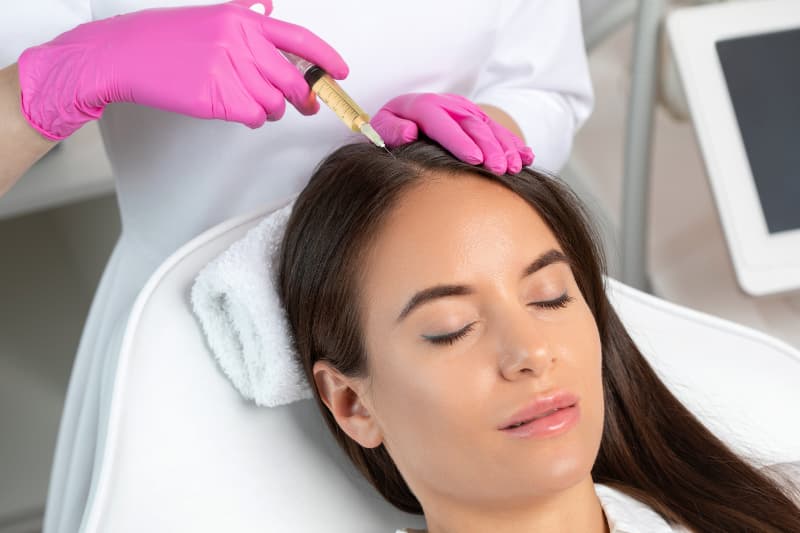تحقيق الجودة في الصحة والجمال!


In the quest for luscious locks and a fuller head of hair, many individuals turn to PRP (Platelet-Rich Plasma) treatment. This innovative procedure has gained popularity for its potential to stimulate hair growth and enhance hair quality. However, PRP treatment isn’t a one-size-fits-all solution. To ensure you make an informed decision, it’s crucial to understand who should avoid this procedure and why. In this article, we’ll explore the factors that determine who should not get PRP treatment.
Before diving into who should avoid PRP treatment, let’s briefly cover what this procedure entails. PRP therapy involves drawing a small amount of your blood, processing it to isolate platelet-rich plasma, and then injecting it into your scalp. The growth factors in the plasma are believed to stimulate hair follicles, promoting hair regrowth and thickness.
PRP hair treatment can be beneficial for many, but it’s not suitable for everyone. If you fall into any of the following categories, you should consider alternative hair restoration methods:
PRP hair treatment involves a blood draw, and the safety of this procedure during pregnancy or breastfeeding hasn’t been established. It’s best to wait until after childbirth or breastfeeding to consider PRP therapy.
If you have blood disorders like hemophilia or thrombocytopenia, it’s essential to avoid PRP treatment. The procedure’s blood draw and injections could exacerbate your condition or lead to complications.
People with active scalp infections, such as fungal or bacterial infections, should postpone PRP treatment. Treating the infection should be the priority, as the procedure may worsen the condition or spread the infection.
Uncontrolled diabetes can affect wound healing and the body’s response to the PRP treatment. It’s advisable to stabilize your blood sugar levels before considering this procedure.
Cancer patients undergoing chemotherapy should avoid PRP treatment until their chemotherapy treatment is complete. Consult with your oncologist to determine the best timing for hair restoration therapies.
Individuals with skin conditions on their scalp, such as psoriasis or eczema, should address these issues before pursuing PRP therapy. The presence of skin diseases may interfere with the effectiveness of the treatment.
PRP treatment may cause some discomfort, but it is generally well-tolerated. A numbing cream is applied to minimize pain during the injections.
The number of PRP sessions required varies from person to person. On average, you may need 3-4 sessions spaced a few weeks apart to see significant results.
There is minimal downtime after PRP treatment. You can usually resume your regular activities immediately after the procedure.
Common side effects include mild swelling and bruising at the injection site, but these usually subside within a few days.
Yes, PRP therapy can be combined with other hair restoration treatments, such as hair transplants or medications, for enhanced results.
PRP treatment is generally suitable for various hair types, but individual results may vary. Consult with a healthcare professional for personalized advice.
PRP treatment holds promise as a non-surgical solution for hair restoration. However, it’s essential to recognize that not everyone is an ideal candidate for this procedure. To make an informed decision, consult with a healthcare provider who can assess your suitability for PRP treatment based on your medical history and individual circumstances.
Remember, your hair’s health and appearance are closely tied to your overall well-being. Prioritize your health, address any underlying issues, and, if suitable, consider PRP hair treatment as a potential path to a fuller, healthier head of hair.